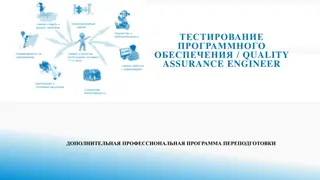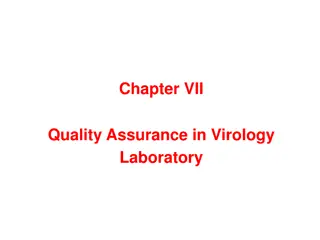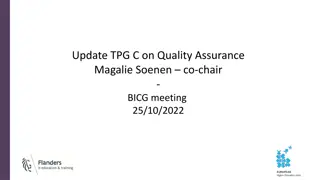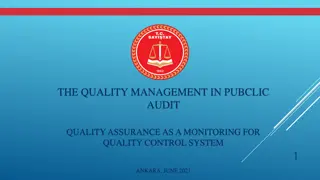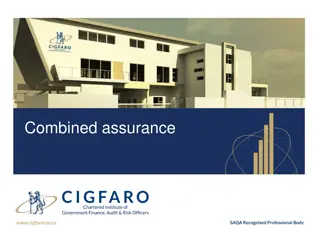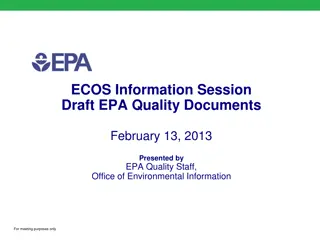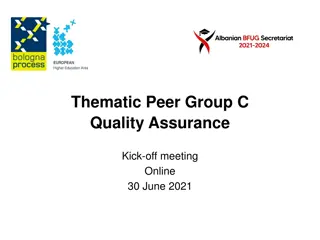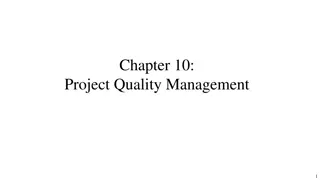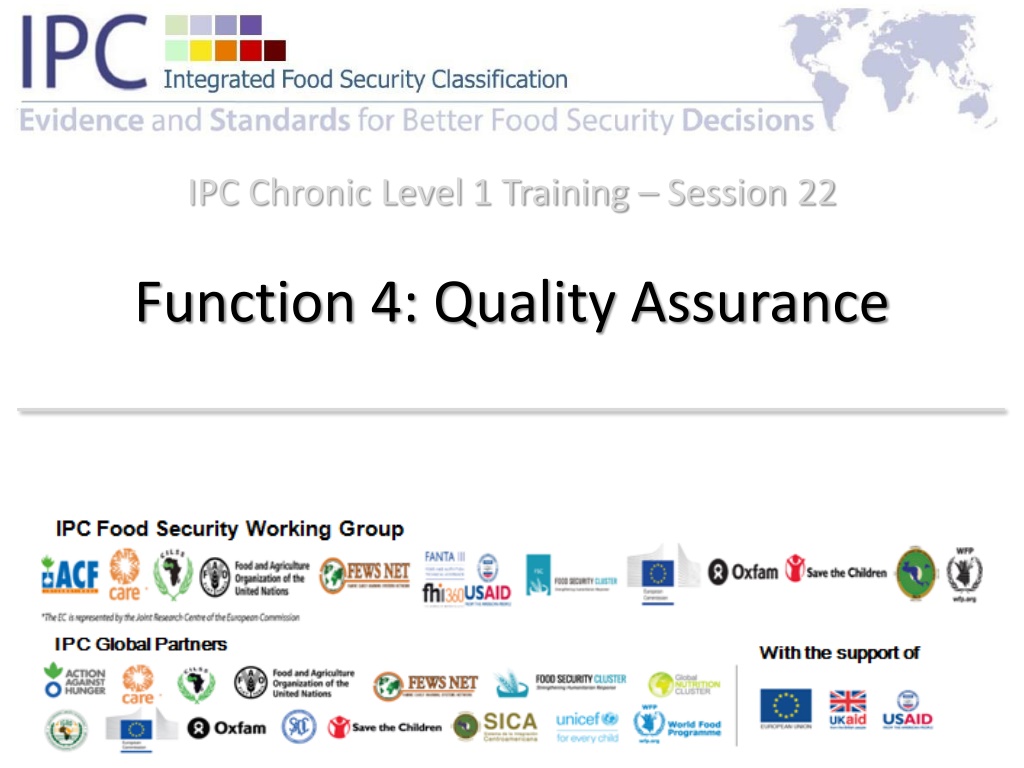
Ensuring Quality Control in IPC Chronic Analysis
This training session focuses on Quality Assurance in IPC Chronic Level 1 Training, emphasizing the importance of maintaining acceptable quality in analysis products. It covers protocols for conducting self-assessment and engaging in external quality reviews, along with procedures and tools for quality control, self-assessment tools, and external quality reviews. Participants learn to reflect on adherence to protocols and identify areas for improvement, ensuring consistent quality in IPC products.
Download Presentation

Please find below an Image/Link to download the presentation.
The content on the website is provided AS IS for your information and personal use only. It may not be sold, licensed, or shared on other websites without obtaining consent from the author. If you encounter any issues during the download, it is possible that the publisher has removed the file from their server.
You are allowed to download the files provided on this website for personal or commercial use, subject to the condition that they are used lawfully. All files are the property of their respective owners.
The content on the website is provided AS IS for your information and personal use only. It may not be sold, licensed, or shared on other websites without obtaining consent from the author.
E N D
Presentation Transcript
IPC Chronic Level 1 Training Session 22 Function 4: Quality Assurance IPC Food Security Working Group
Learning Objectives To be able to explain the two protocols of Quality Assurance Complete the IPC self-assessment tool 2
Quality Control Importance of Function: To ensure the users and decision-makers of an acceptable quality of analysis products Two protocols: Conduct Self- Assessment of Analysis Request and engage in an External Quality Review if necessary
Procedures and tools for Quality Control through IPC process TWG and Analysis Team formation Documenting evidence Assigning Reliability Scores Assigning Evidence Levels Consultative meeting with stakeholders to present and revise findings as needed Self-assessment tool External Quality Review of IPC Chronic Analysis if needed 4
Self-assessment tool AT to fill in the tool after every analysis: Critically reflect on how well they followed the IPC protocols and to identify areas for future improvements be entirely adhered to, the AT should provide a reasonable explanation for it. If the outcomes of the self-assessment raise serious concerns, an External Quality Review may be initiated. When planning a new IPC analysis, the previous self-assessments should be reviewed to ensure that lessons learnt in preceding analyses are acted upon If the protocols have not been followed, the AT should attempt to revise the analysis to ensure adherence to all protocols and quality of the IPC products. If the Protocols cannot
Self-assessment tool (cont.) To be completed by the Chairperson together with the AT Can also be completed by individual AT members Should be submitted to IPC GSU either through Regional Team or by ISS, or by sending it to Quality.Assurance@ipcinfo.org
External Quality Review Can be activated: If there s a breakdown in technical consensus in classification of Level 4 Based on review of self- assessment tool or communication from AT or partner agency esp. relating to classification of areas in Level 4 7
Self-Assessment Tool Exercise 22.1 Task : Individually... 1. Review the self-assessment tool in your Workbook. Complete it based on the last IPC analysis you took part in 8
Wrap-up Do you feel you can .? Explain the importance of Quality Control? Describe the tools and procedures for Quality Control? 9






